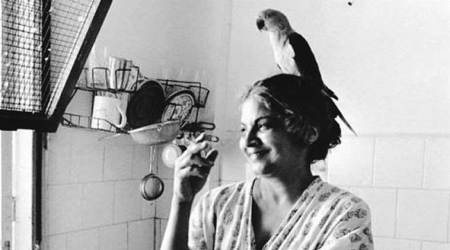 Built in 1884 by Aga Khan II and the local Khoja community, it was the resting place of Aga Khan I, the leader of the Khoja community in Bombay. He died in 1881.
Built in 1884 by Aga Khan II and the local Khoja community, it was the resting place of Aga Khan I, the leader of the Khoja community in Bombay. He died in 1881.
Within the narrow, bustling streets of Mazagaon lies Hasanabad, the resting place of Aga Khan I, the 46th Imam of the Nizari or Ismaili Muslims. Surrounded by chawls, highrises and shops, the marble monument that reminds many a visitor of the Taj Mahal, is a hidden historical gem. It has a wide ground surrounded by gardens and is a famous horticulture site.
At the far side of the compound lies the mausoleum (Maqbara) that has the tomb of Aga Khan I.
Built in 1884 by Aga Khan II and the local Khoja community for Rs 3 lakh, it was the resting place of Aga Khan I, the leader of the Khoja community in Bombay. He died in 1881. Born Hasan Ali Shah, he was awarded the title “Aga Khan” while he was the governor of an Iranian province in the early 1800s.
Hasanabad’s architectural style, many visitors feel, resemble the Taj Mahal. It has domes and two 90 feet minarets joined to the mausoleum.
“I was awestruck by Hasanabad when I first came here two years ago. I felt so peaceful,” says Karim, a migrant from Northern India.
Not known to many – only Ismailis are allowed to enter the inner tomb in Hasanabad – concerns over security made the monument off limits for the general public in recent years. However, it continues to be a pilgrimage site and many Ismailis travel to the city just to visit Hasanabad.
“On festive occasions, like the 14th day of Rajab, Hasanabad is filled with devotees,” says Bajruddin Prehman, one of Hasanabad’s caretakers.
Karim Hooda, a Texas resident, says: “When you walk in, (you will find) it has a homely, lively and community-like aura unlike anything you can experience elsewhere in the world. The place is home to rich history. It is the perfect manifestation of the beautiful struggle and is a breeding ground for many a great people.” The place was once a hub for social activities.
Rafique Baghdadi, a film critic, author and historian, said: “During the Bombay plague (1896), Aga Khan II allowed Khojas to take preventive medicines in the Hasanabad compound itself.”
Although access may be restricted, a glance from outside, visitors feel, is quite breathtaking.
The monument that is illuminated after sunset, stands as a sparkling white piece of history in the rapidly changing landscape of South Mumbai.

